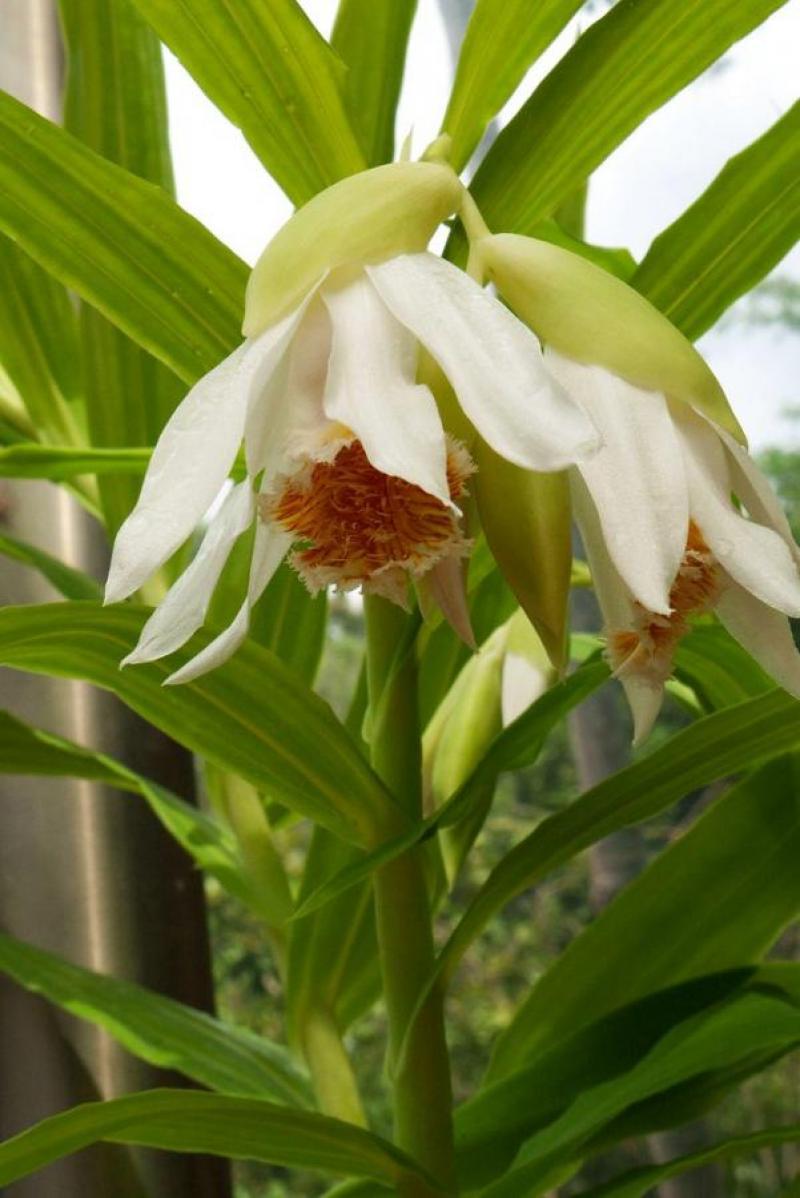Thunia alba
Also known as: The White Thunia or Phaius albus Thunia alba var. marschalliana Thunia alba subvar. triloba Thunia marshalliana f. ionophlebia Thunia marshalliana var. ionophlebia Thunia nivalis Phaius bensoniae Phaius marshalliae Phaius niveus Phaius marshallianus Phaius marshallianus var. purpurata Thunia alba h.f. rosea Thunia alba h.v. marshalliana Phaius marshallianus var. triloba Thunia alba h.f. alba Thunia marshalliae Thunia marshalliana var. purpurata Thunia marshalliana var. triloba Thunia alba var. bracteata Thunia alba var. alba Thunia marshalliana Thunia majorensis Thunia venosa Thunia bracteata Limodorum bracteatum in the subfamily: Epidendroideae
Native to: Bhutan India Nepal Thailand Tibet - China Yunnan - China
General Information
The White Thunia is a large sympodial cool to warm growing lithophytic or terrestrial orchid belonging to the sub family Epidendroideae native to Bhutan, India, Nepal, Thailand, and China.
Plant Description
Sympodial. Grows to 60cm. Each new growth has numerous lance shaped oblong shaped leaves that grow to 20cm long. Pseudobulbs grow to 60cm
Substrate(s)
- Coarse
- Charcoal
- Treefern
- Spaghnum Moss
- Perlite
- Sand
Care Notes
This orchid goes into a dormancy phase during winter, during this phase it is best not to provide water unless the plant is starting to look thirsty. The lack of water increases the chance of flowering in spring, and also reduces the likelihood of any rot forming. Do not resume watering until new growth has appeared and is growing strongly.
Often a period of intense growth occurs after dormancy. During this time the amount of light, water and fertiliser the plant receives will directly impact the amount of growth that occurs during this time, and in the case of seedlings, will reduce the time required to reach maturity.
It's recommended to heavily reduce the water amount at the middle to end of autumn to trigger dormancy. Leaves on older bulbs will begin to drop during this time while the newer bulbs continue to mature until terminal leaves appear at the tip of the pseudobulbs.
Repotting can be done any time of the year though it's best to do it in early spring when new growth is appearing as this also means new roots will appear to help the plant anchor into the new media and offset any damage to established roots during the repotting process.
Climate
hot-forest-orchids Grows at low to high elevations. Rainfall ranges from 8mm to 292mm per day, heaviest in September and lightest in January. Humidity ranges from 58% to 83%, highest in August and lowest in March. Temperature ranges from 6C to 28C, highest in April (17C to 28C) and lowest in January (6C to 22C).
Fertiliser
These plants thrive on fertiliser, especially during periods of growth. Liquid fertiliser can be applied at the recommended strength, augmented with manure pellets or other quickly degradable fertiliser, applied away from the base of the plant, during periods of strong growth that occurs in the middle of the growth season.
Do not fertilise during the dormant period. Avoid using slow release fertiliser that breaks down for longer than 3 months, if using apply only after dormancy when new shoots have developed noticably, applied 4-5 pellets per cup (250ml) of media.
They can benefit from a high phosphate fertiliser leading up to flowering season, and by a high nitrogen fertiliser when new growth appears.
Use balanced fertiliser during Spring and Summer. Use a high Nitrogen fertiliser during Spring and Summer. Use a high Phosphorous fertiliser during Summer.Potting
These plants can be sensitive to repotting though should not require repotting regularly. Repotting should be done when the mix has broken down to the point that it doesn't absorb water or holds onto water for far too long, usually the plant shows a decline in growth as well. Repotting is best done after the growing season when the plant has died back.
The mix should be free draining, with a blend of 30% inorganic ingredients such as coarse sand, gravel or perlite, mixed in with about 70% organic ingredients such as peat, leaf litter or decomposed bark. Avoid commercial potting mixes as they can vary wildly and may contain "wetting agents" that can hold onto water for loo long, causing rotting and stunted growth.
Use water retentive media such as moss to prevent roots from drying out quickly This plant does well mounted. Repotting is best done annually and in Spring or Autumn.














